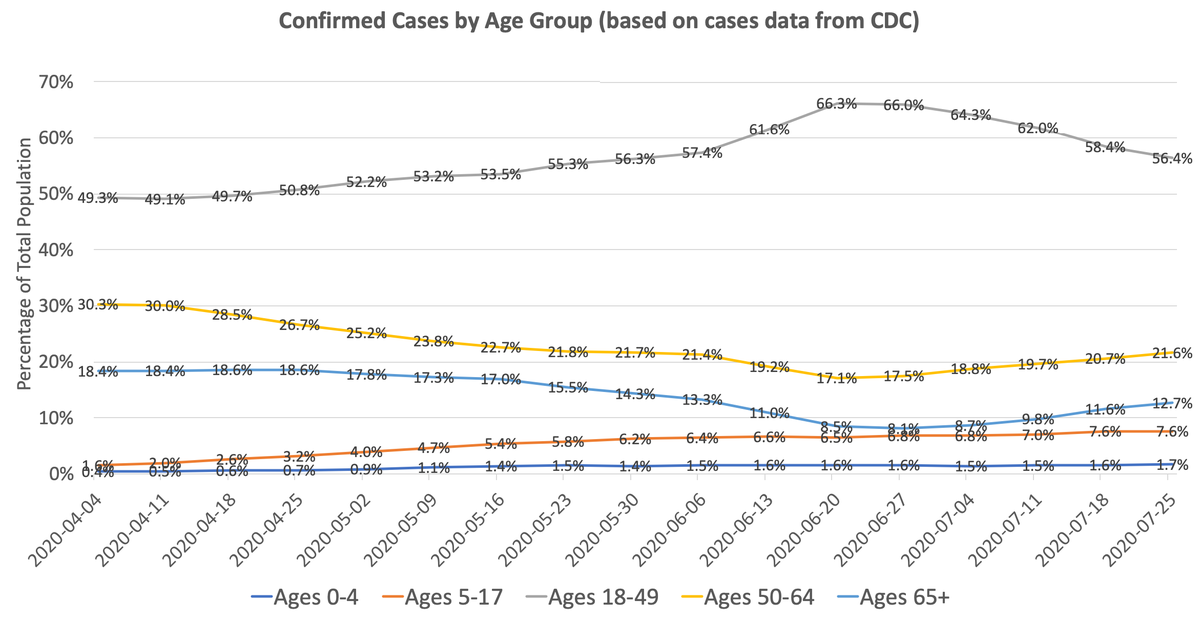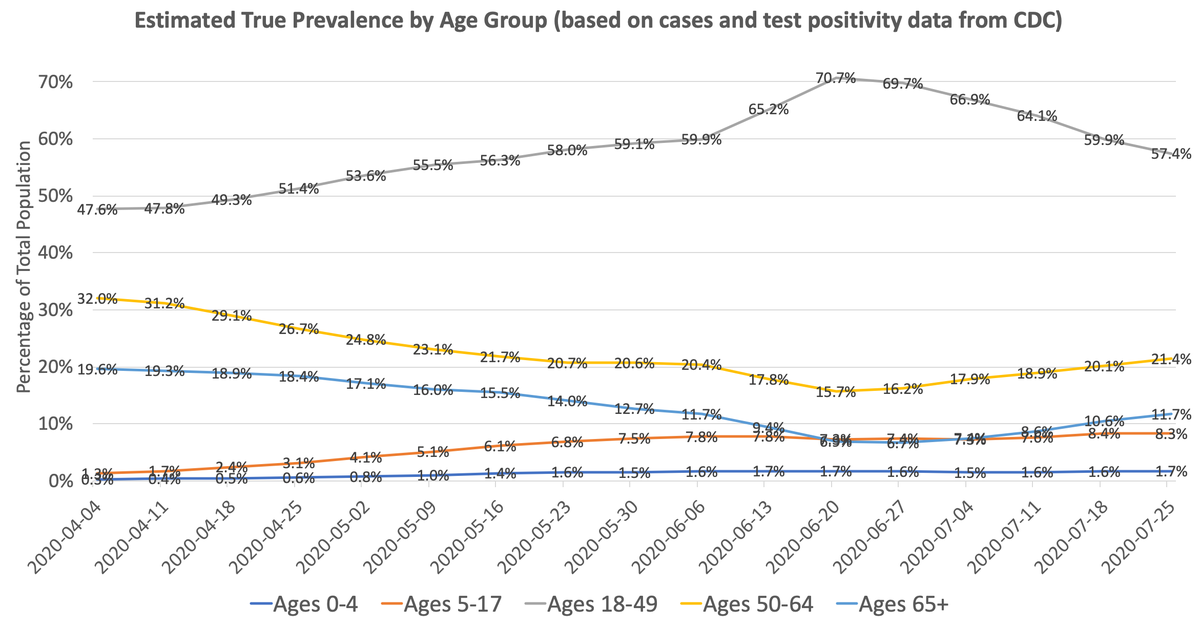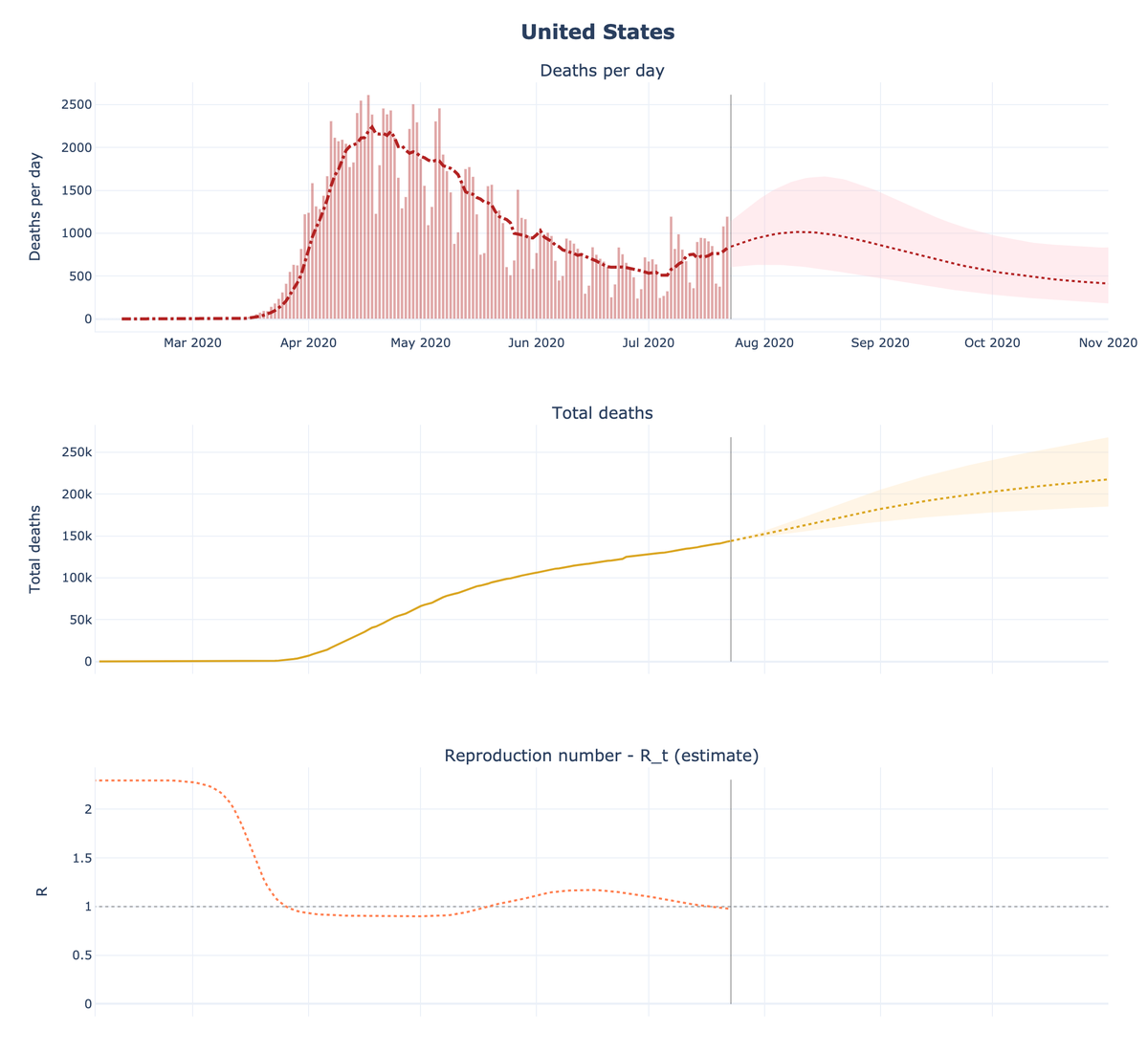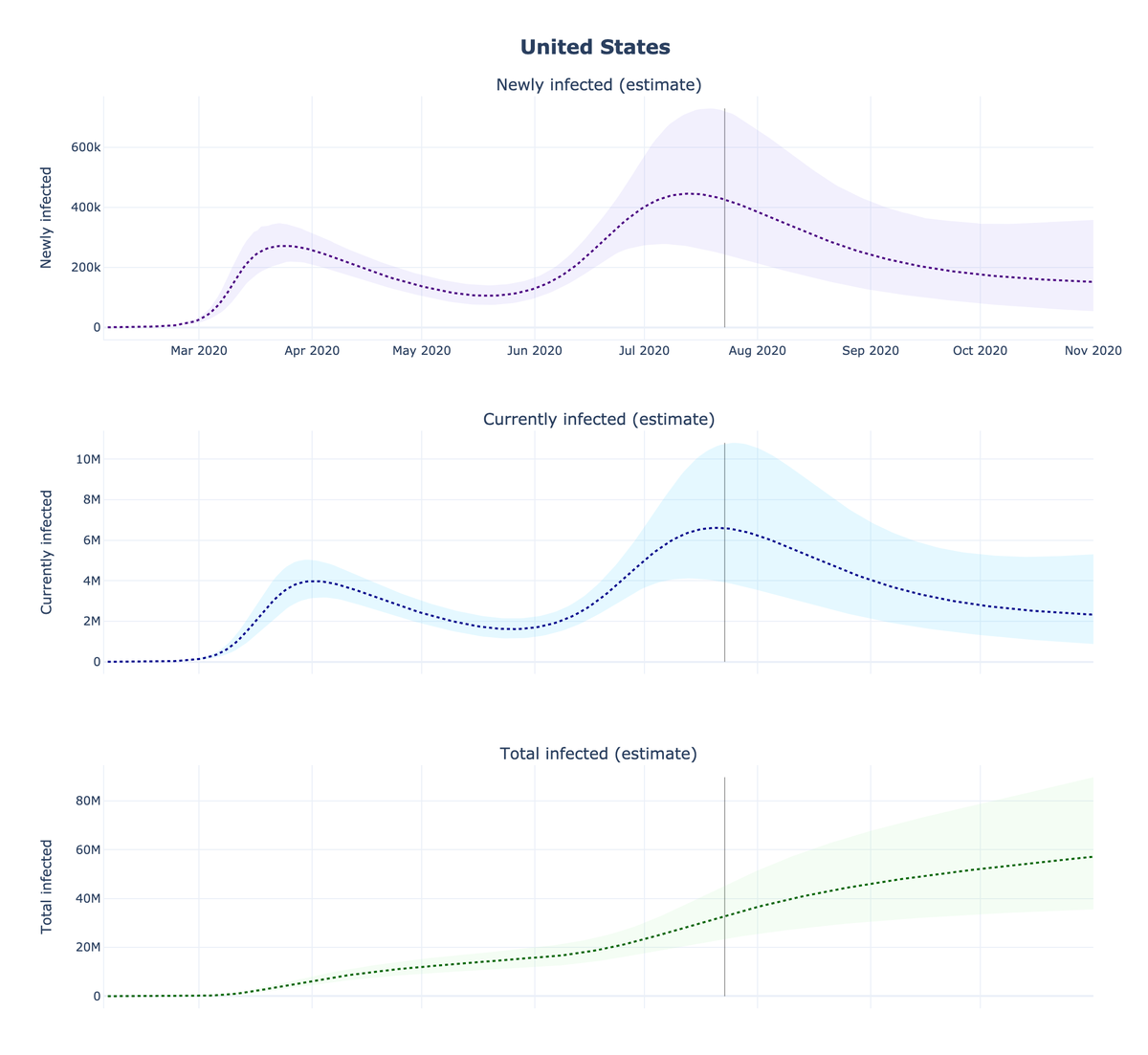Full write-up: covid19-projections.com/estimating-tru…
I hope to get some review/feedback/discussion from #epitwitter.
1) The virus is more prevalent now than in March/April
2) Current infection fatality rate is lower (~0.25%) mostly due to lower median age of infection
3) Herd immunity threshold is lower (~10-35%) due to lower rate of transmission (Rt)
Of course, this relationship isn't perfect. Recent positivity rates may skew high because some states do not report repeated negative results.
Even though the data source is exclusive, the resulting shape of new infections is similar and shows a higher peak of ~450k infections/day in July.

After we have an estimate of the true infections, we can compute the implied infection fatality rate by factoring in deaths from approximately 4 weeks later.
We can do this for the US nationally, or on a state-by-state basis.
Once we factor in test positivity rate to get true prevalence, the difference is even more pronounced.
cdc.gov/coronavirus/20…


One caution is that this trend is slowly reversing.
Infections are now declining in almost all heavily-impacted states, despite no clear policy interventions.
Estimating the HIT based on the current effective reproduction numbers results in a ~10-35% effective HIT. (Formula: HIT = 1-1/Rt)
It's just that the Rt is much lower now after reopening (1-1.5) due to changes in behavior/policy, and that results in a lower effective HIT.
Full disclaimer: I am not an epidemiologist, so if anything I said is inaccurate, let me know and I will be happy to correct them.
Before commenting, I encourage everyone to read the report first, particularly the "Disclaimers" section.
github.com/youyanggu/covi…
You can find estimates of the true daily new infections, implied IFR, implied CFR, etc for every state and nationally. I aim to update this data daily.
Good news: We are likely past the peak.
Bad news: ~1,000 people are still dying every day and may remain at a high level for some time, esp with school reopenings & flu season coming up.
Thanks for reading. I'll be going through the comments for feedback/suggestions.
Better insights on HIT by @mgmgomes1:
@WeinbergerDan and his lab have been taking a deep dive into excess deaths:
















